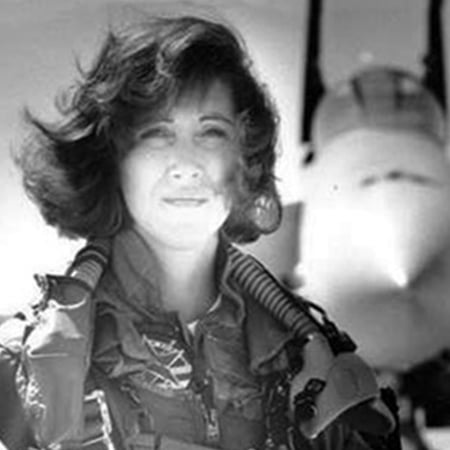

After making an emergency landing at Philadelphia International Airport on Tuesday, April 17, 2018, pilot Tammie Jo Shults is hailed as a hero. An apparent engine failure sent shrapnel flying in the cabin and blew out a window on the left side of Southwest Airlines flight 1380.
“The pilots did an unbelievable job” landing crippled Southwest plane
Seven people suffered injuries and one woman died as a result of the engine explosion. The pilot can be heard on the radio calmly coordinating an emergency landing with the control tower at Philadelphia.
She landed the plane with one engine and no hydraulics. Passenger Joseph Marcus told reporters, “We landed somehow. The pilots did an unbelievable job, and thanks to them we made it out of there.” Other passengers identified the pilot on the loudspeaker as Tammie Jo.
Southwest Airlines pilot one of the Navy’s first female fighter pilots
Tammie Jo Shults put her fighter pilot training to use to safely land the Boeing 737. After earning her degree in biology and agribusiness at Nazarene University in Kansas, Shults became one of the first female fighter pilots in the U.S. military.
She was among the first female pilots to fly tactical aircraft after completing flight training. Shults was passionate about flying and went to the Navy to achieve it. She went on to be the first woman to fly an F/A-18 Hornet for the Navy. She then trained military pilots before being hired by Southwest. Flying in an industry where only 6.2 percent of the commercial pilots are women, she has been credited as being an excellent role model with tenacity, motivation, and determination by those who know her.
Pilot remained “calm and assured” under pressure to land plane safely
The chairman of the National Transportation Safety Board said he was impressed by what he heard on radio communications from the cockpit. Robert Sumwalt said, “You could hear their intonation. The pilots seemed very calm and assured about what they’re doing… My hat is off to them. They behaved in a manner that their training would prepare them for.” Travelers said after the emergency landing that Shults walked down the aisle and checked on passengers.
The National Transportation Safety Board chairman reported the investigation into the engine failure will initially take place at the Philadelphia International Airport before moving the plane to an offsite location. Sumwalt further announced the initial focus of the investigation is on a missing fan blade in the engine that appeared to have come apart due to metal fatigue.

